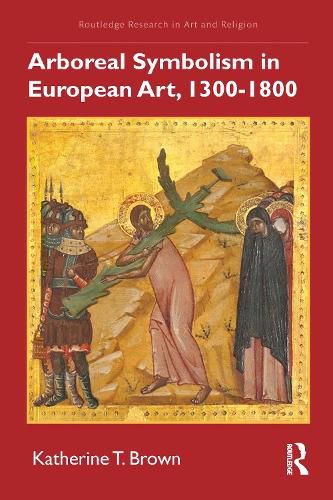Readings Newsletter
Become a Readings Member to make your shopping experience even easier.
Sign in or sign up for free!
You’re not far away from qualifying for FREE standard shipping within Australia
You’ve qualified for FREE standard shipping within Australia
The cart is loading…






Arboreal Symbolism in European Art, 1300-1800 probes the significance of trees in religious iconography of Western art.
Based in the disciplines of art history, botany, and theology, this study focuses on selected works of art in which tree forms embody and reflect Christian themes. Through this triple lens, Brown examines trees that early modern artists rendered as sacred symbols-symbols with origins in the Old Testament, New Testament, Greek and Roman cultures, and early medieval legends. Tree components and wood depicted in works of art can serve as evidence for early modern artists' embrace of biblical metaphor, classical sources, and devotional connotations. The author considers how artists rendered seasonal change in Christian narratives to emphasize themes of spiritual transformation. Brown argues that many artists and their patrons drew parallels between the life cycle of a tree and events in the Gospels with their respective annual, liturgical celebrations.
This book will interest scholars in art history, religion, humanities, and interdisciplinary studies.
$9.00 standard shipping within Australia
FREE standard shipping within Australia for orders over $100.00
Express & International shipping calculated at checkout
Arboreal Symbolism in European Art, 1300-1800 probes the significance of trees in religious iconography of Western art.
Based in the disciplines of art history, botany, and theology, this study focuses on selected works of art in which tree forms embody and reflect Christian themes. Through this triple lens, Brown examines trees that early modern artists rendered as sacred symbols-symbols with origins in the Old Testament, New Testament, Greek and Roman cultures, and early medieval legends. Tree components and wood depicted in works of art can serve as evidence for early modern artists' embrace of biblical metaphor, classical sources, and devotional connotations. The author considers how artists rendered seasonal change in Christian narratives to emphasize themes of spiritual transformation. Brown argues that many artists and their patrons drew parallels between the life cycle of a tree and events in the Gospels with their respective annual, liturgical celebrations.
This book will interest scholars in art history, religion, humanities, and interdisciplinary studies.